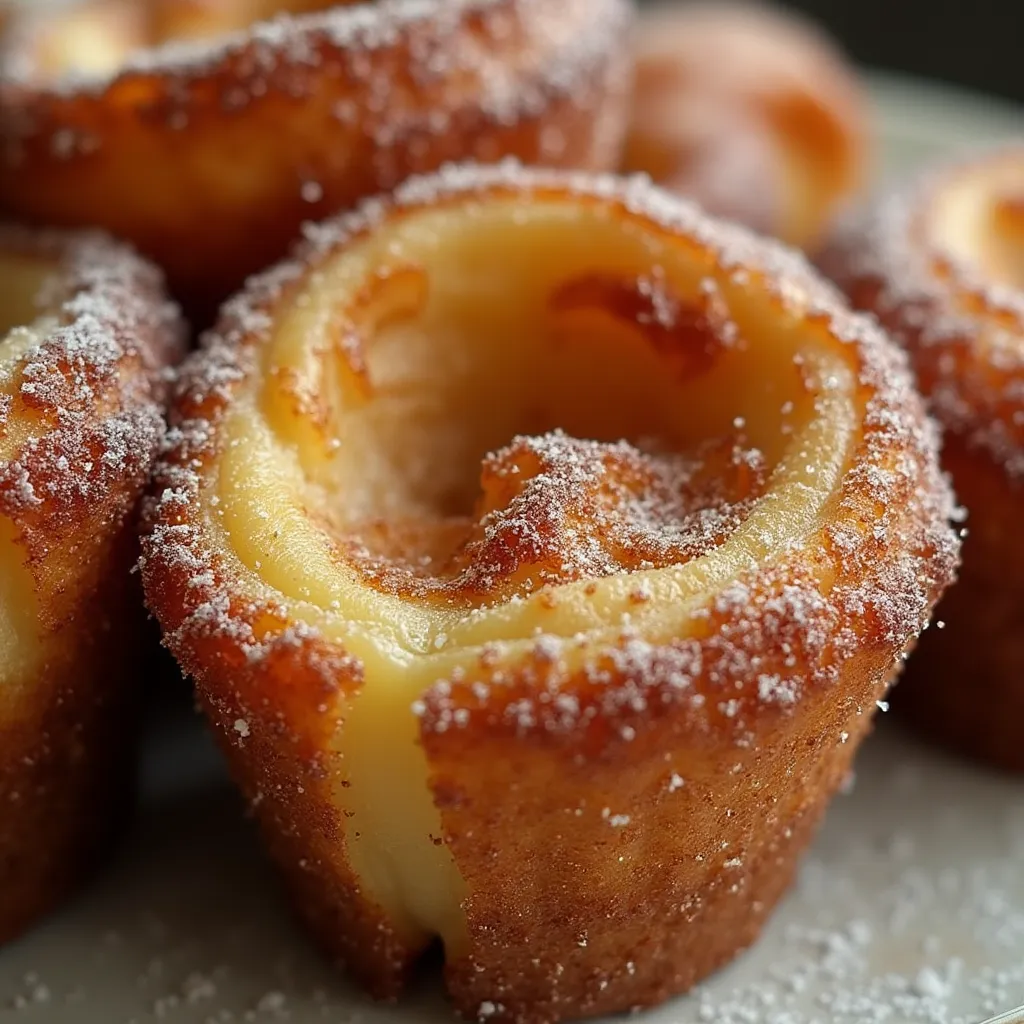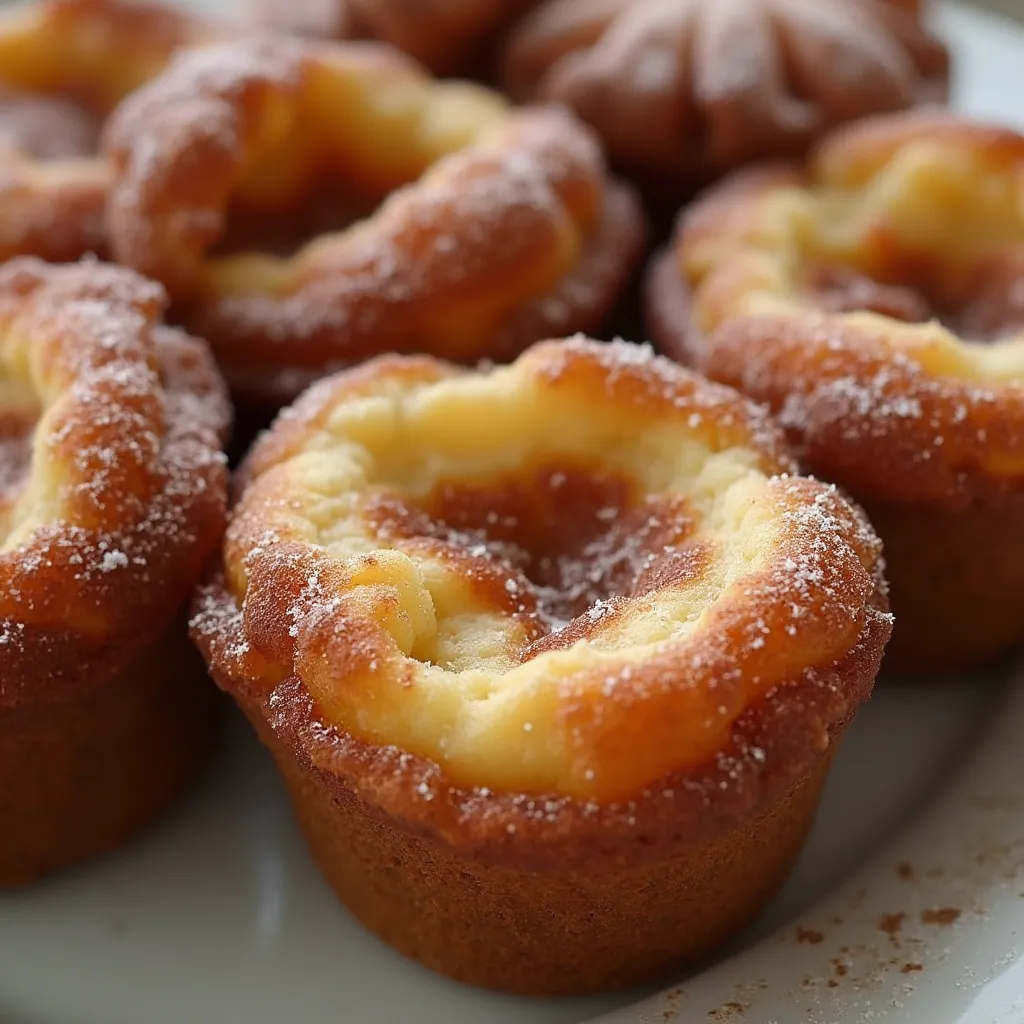 pin it
pin it
I first encountered Pasteis de Nata during a trip to Lisbon, where I stood in line at the famous Pastéis de Belém bakery. The moment I bit into that warm, crispy pastry with its creamy custard center, I was hooked. The contrast between the flaky exterior and the silky, sweet filling was unlike anything I'd tasted before. After returning home, I became determined to recreate that magical experience in my own kitchen. It took several attempts to get the pastry just right - that perfect balance of butter layers that create the distinctive crispy texture. The custard requires attention too, cooking it just enough to set properly without becoming rubbery. When I finally pulled a batch from the oven that matched my memory of those Lisbon tarts, the satisfaction was incredible.
Why I love this recipe
I love these Portuguese Custard Tarts because they represent the perfect balance of textures and flavors in a single bite. The pastry provides that satisfying crunch before giving way to the silky, creamy custard center. There's something magical about the caramelized top with its distinctive charred spots that add complexity to the sweetness. I appreciate how these tarts connect me to centuries of baking tradition - the recipe hasn't changed much since monks first created it in the 18th century. There's also something deeply satisfying about mastering the technique of creating that perfect spiral of laminated dough. Every time I serve these, the looks of delight on people's faces remind me why I love baking - it's about creating moments of pure joy through food. These tarts might take some time to prepare, but the results are absolutely worth every minute spent in the kitchen.
What You Need From Your Kitchen
- Puff Pastry: Creates the crispy, flaky shell for the custard.
- Egg Yolks: Provide richness and structure to the custard filling.
- Whole Milk: Forms the base of the creamy custard.
- Cinnamon Stick: Infuses the custard with warm spice notes.
- Lemon Peel: Adds a subtle citrus aroma to balance the sweetness.
- Cornstarch: Thickens the custard to the perfect consistency.
Let's Make These Together
- Prepare the dough
- Mix flour and salt, then work in cold butter until crumbly. Add cold water gradually until dough forms. After shaping into a rectangle, chill for 30 minutes before laminating through a series of folds to create flaky layers.
- Create the custard
- Make a flavored syrup with water, sugar, cinnamon, and lemon. Separately, whisk egg yolks with cornstarch, then gradually add hot milk. Cook until thickened, then incorporate the strained syrup and vanilla.
- Shape the tarts
- Roll the laminated dough into a log and cut into even pieces. Press each piece into a muffin tin to create thin-walled cups that will hold the custard filling.
- Bake to perfection
- Fill the pastry cups with warm custard and bake in a very hot oven until the edges are golden and the tops develop characteristic caramelized spots. Let cool briefly before finishing with a dusting of powdered sugar.
 pin it
pin it
Switch Things Up
The first time I made these custard tarts, I was intimidated by the process of creating the laminated dough. After a few attempts, I discovered that keeping everything cold is the secret to that perfect flaky texture. One Sunday morning, I decided to add a sprinkle of cinnamon to the custard mixture, which added a wonderful warmth to the flavor profile. My family couldn't get enough! I've also experimented with adding a tiny bit of orange zest to the custard, which gives a subtle citrus note that complements the rich egg flavor beautifully.
Perfect Pairings
These Pasteis de Nata are traditionally enjoyed with a strong espresso or Portuguese coffee. The bitterness of the coffee perfectly balances the sweetness of the tarts. For an afternoon treat, pair them with a glass of Port wine for an authentic Portuguese experience. If serving as part of a dessert spread, they complement fresh berries and light vanilla ice cream. For a breakfast option, serve alongside fresh fruit and a cup of cinnamon tea.
 pin it
pin it
Frequently Asked Questions
- → Can I make these tarts ahead of time?
While Pasteis de Nata are best enjoyed fresh from the oven, you can prepare the dough and custard separately up to 2 days in advance and store them in the refrigerator. Assemble and bake when ready to serve for the best texture and flavor.
- → Why didn't my tarts caramelize on top?
The characteristic caramelization requires a very hot oven, at least 475°F (245°C). Make sure your oven is fully preheated and consider placing the tarts on the upper rack. The custard should also have enough sugar content to caramelize properly.
- → Can I use store-bought puff pastry instead?
Yes, you can use store-bought puff pastry as a time-saving alternative. Choose all-butter puff pastry for the best flavor, and still roll it into a log before cutting to achieve the characteristic spiral pattern in the shells.
- → Why did my custard curdle?
Curdling typically occurs when eggs are heated too quickly or at too high a temperature. Always temper the egg mixture by gradually adding hot milk while whisking constantly, and cook over medium heat while stirring continuously.
- → How do I store leftovers?
Store leftover tarts in an airtight container at room temperature for up to 2 days. They can be gently reheated in a 300°F (150°C) oven for 5-10 minutes to restore some crispness. Avoid refrigerating as this softens the pastry.
Conclusion
These Portuguese Custard Tarts (Pasteis de Nata) are a delightful dessert with a rich history dating back to the 18th century. The combination of flaky, buttery pastry with the creamy, caramelized custard creates an irresistible treat that's enjoyed worldwide. Whether served warm from the oven with a light dusting of powdered sugar or at room temperature with a cup of coffee, these tarts are sure to impress family and friends alike.
